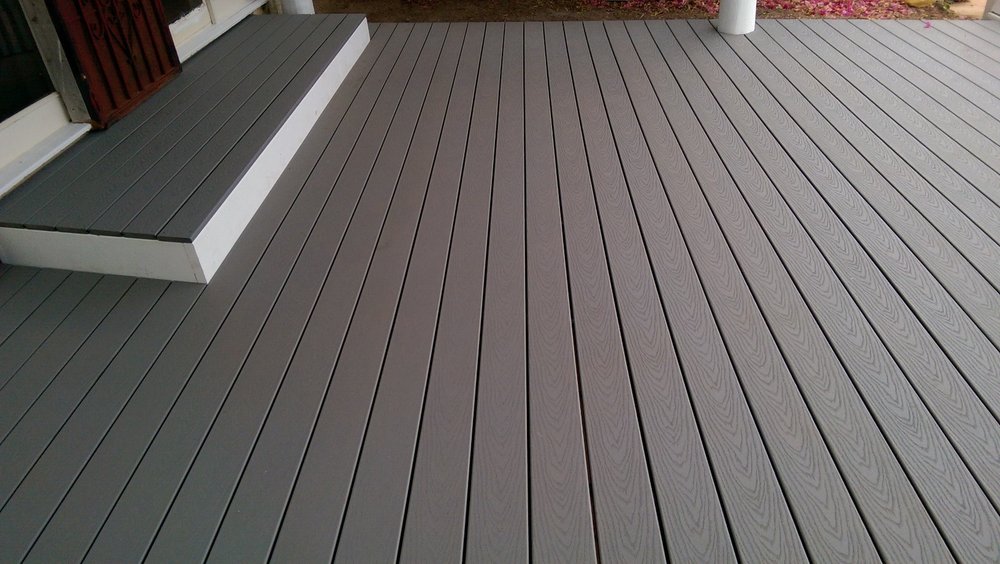Composite vs. Wood: Which Deck Material Is Right for You?
When choosing decking material, homeowners often face a critical decision: natural wood or composite/synthetic materials. Each has its merits — aesthetics, cost, longevity, maintenance — but in regions with high fire danger, like many parts of California, fire performance becomes a key factor. Below is a comparison of both, along with how fire safety influences the choice.
1. Appearance & Aesthetic Flexibility
Wood: Offers natural grain, warmth, and the ability to stain or paint. Common choices include redwood, cedar, Ipe, and pressure-treated lumber.
Composite / Synthetic: Engineered materials blend wood fibers, plastics (or fully synthetic polymers) and often come pre-capped with a range of colors, textures, and no need for staining.
2. Maintenance & Longevity
Wood: Requires periodic sealing, staining, and inspection for rot, insect damage, and weathering. Over time, boards may crack, warp, or check.
Composite: Generally low-maintenance — no staining or sealing. Resistant to rot, decay, UV damage, and many composites last 20+ years with minimal upkeep.
3. Cost & Value Over Time
Wood: Lower material cost up front for many species, but ongoing maintenance and replacement costs can add up over time.
Composite: Higher initial investment, but reduced maintenance often balances it out over a long time horizon.
4. Structural & Load Performance
Both wood and composite decking can be engineered for strength, proper span, and safety when properly installed. The substructure (joists, beams, fasteners) must be sized and spaced correctly regardless of decking material.
5. Fire Performance & Safety in High Fire-Danger Zones
Why Fire Safety Matters in California
Many parts of California are designated Wildland-Urban Interface (WUI) or Fire Hazard Severity Zones. Building codes in those areas — such as California Chapter 7A — require materials and construction methods that resist ignition and slow flame spread.
Decking surfaces must meet performance requirements, and often any combustible debris under or near the deck is a major risk.
How Wood Fares
Untreated wood is naturally combustible, and even fire-retardant treated wood may degrade over time or lose performance.
In many California jurisdictions, decking wood must pass tests for heat release and flame spread to be allowable in wildfire-prone areas.
Even if the deck boards pass tests, adjoining siding and under-deck debris or vegetation often become ignition pathways.
Composite & Synthetic Options for Fire Zones
Some composite decking products (especially pure PVC or engineered decking with fire-resistive additives) now achieve Class A or ignition-resistant ratings and are listed in the California WUI / Building Materials Listing (BML) for compliance with Chapter 7A.
For instance, TimberTech’s Advanced PVC collections are Class A and WUI-compliant, meaning they resist flame spread and ignition better than standard composites.
Composite materials do not contain large amounts of cellulose (wood), which lowers their fuel content; carefully engineered composites can be safer in ember-rich environments.
However, not all composite boards are created equal — many “composites” incorporate wood fibers and plastics, which under fire conditions may burn or melt faster than pure PVC variants.
6. Climate & Durability Considerations
Coastal/coastal-climate: Salt air, moisture, and UV exposure favor composites that resist fading, swelling, or rot.
Interior or sheltered areas: Wood may perform well if properly maintained.
Thermal expansion: Composite materials often expand and contract more than wood, so gap spacing and fastening details are critical.
7. Environmental & Sustainability Factors
Wood: Can be sustainable if sourced from certified forests; biodegradable and recyclable.
Composite: Many use recycled plastic and wood fibers; long life means fewer replacements; but end-of-life recycling depends on material design.

Which One Should You Choose?
If fire risk is a major concern (e.g. your home sits in a WUI zone, steep slope, or surrounded by wildland), choosing a Class A or ignition-resistant composite or pure-polymer decking is often the safer and code-compliant path.
If you love the look of wood and are ready to stay on top of maintenance, a durable species (Ipe, cedar, redwood) or fire-retardant-treated wood may suffice — but only if you mitigate all ignition risks (clear debris, manage vegetation, use flashing, maintain under-deck clearance).
In many coastal and fire-prone areas, a hybrid approach works: use fire-rated composite decking for your walking surface and complement it with wood elements in less exposed zones.
